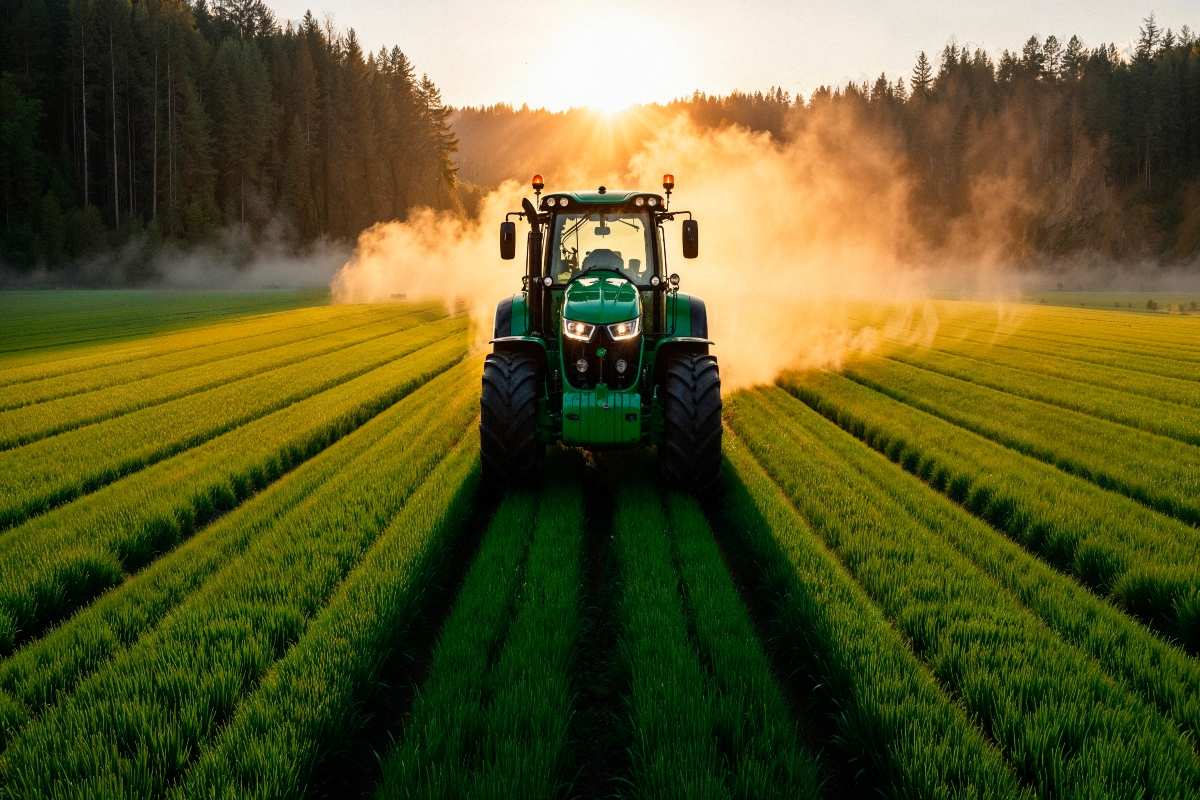.jpg)
If you’ve ever found yourself staring at a catalog (or a row of online listings) filled with spray nozzles of every size, shape, and material, you know it’s not as simple as grabbing the first one that “looks right.”
The truth is, spray nozzle selection is one of those decisions that quietly dictates whether your project runs efficiently or turns into a frustrating mess.
Too much flow? Do you waste material and money? Too little? You risk poor coverage and uneven results. And the wrong spray pattern? Let’s just say you’ll spend more time fixing the mess than getting the job done.
When it comes to spraying equipment, making the right choice up front can save you time, resources, and frustration.
So, how do you navigate all the options without second-guessing every choice? Let’s break it down.
It might sound obvious, but you’d be surprised how many people overlook this step.
The material you’re spraying, water, chemicals, paint, lubricant, fertilizer, immediately narrows your choices. Some liquids are thick and need a nozzle with a wider orifice to avoid clogging. Others are thin and require precision to prevent overspray.

Think about it this way: you wouldn’t put a garden hose attachment on a professional paint sprayer, right? The same principle applies here.
Certain liquids require specific materials for the nozzle, too. Chemicals might call for corrosion-resistant stainless steel or specialized plastics, while water-based applications might work perfectly fine with brass.
And it’s not just the liquid. Temperature, viscosity, and even particle size (if you’re spraying something that isn’t purely liquid) can influence the kind of nozzle you need.
If the nozzle is the heart of the system, the spray pattern is its personality. This is where performance meets practicality. Different patterns suit different applications:
Picking the wrong pattern is like using a paint roller for edging; you can technically do it, but the results will show.
Spray nozzles aren’t “one-pressure-fits-all.”
The operating pressure determines droplet size, coverage, and even the drift of the spray. High pressure can create fine droplets for misting or cooling, while lower pressures tend to produce larger droplets for heavier applications.
Flow rate is equally critical. Too much flow and you’re wasting liquid; too little and you’re missing coverage. The two are linked; changing one affects the other, so don’t pick your nozzle without knowing the specs of your pump or sprayer system.
Here’s where spray nozzle selection gets a little technical. Manufacturers often provide performance charts that show how each nozzle behaves at different pressures. Skipping this step is like ignoring a car’s fuel efficiency before a long road trip; it might still work, but it won’t be optimal. For example, in produce sprayers, nozzle choice is critical to deliver even coverage while preventing waste or damage to delicate crops.
It’s easy to default to “the strongest material” when making a choice, but strength isn’t the only factor. Sure, stainless steel nozzles are tough, but if your application involves abrasive materials, ceramics might last longer. For corrosive chemicals, certain plastics or alloys outperform metals.
The key here is compatibility. Even a small mismatch between nozzle material and the liquid can lead to premature wear, reduced performance, or worse, total failure. And in industrial settings, failure usually means downtime, which no one enjoys explaining to the boss.
Some jobs just have their quirks:
The “right” nozzle for one industry might be a complete mismatch for another, even if they look similar on the surface.
Nozzles wear out. It’s unavoidable. Constant exposure to pressure, chemicals, and abrasive materials means even the best nozzle will degrade over time. The trick is not to wait until it’s obvious. Regular inspection and replacement based on usage patterns can prevent expensive mistakes.
Here’s a rule of thumb: if you notice changes in coverage, droplet size, or pattern, it’s time to check the nozzle. A worn nozzle doesn’t just perform worse; it can also waste material, energy, and time.
Here’s where a lot of mismatches happen: the nozzle might be perfect for your liquid and application, but it won’t work properly because it doesn’t match your system’s pressure, pump type, or mounting configuration.
Always check:
Skipping this step can lead to leaks, uneven coverage, or constant readjustment, none of which are worth the headache.
Sometimes, the only way to know for sure is to test. If possible, run trials with a few nozzle types to see which gives you the best coverage, droplet size, and efficiency for your specific setup. This is especially important in high-stakes applications like crop protection, industrial coatings, or chemical spraying.
It’s a little extra effort up front, but it can save you hours of frustration later.
Here’s the thing: choosing a nozzle isn’t like choosing a paint color for your living room. “Close enough” can mean wasted chemicals, reduced efficiency, and higher operating costs. In some industries, it can even affect safety or compliance with regulations.
That’s why taking the time to match your spray pattern, flow rate, material, and application specifics isn’t just a technical detail; it’s a cost-saving, performance-boosting move.
When it comes to spray nozzle selection, the smartest move you can make is to treat it like an investment, not an afterthought.
Every factor - liquid type, pressure, spray pattern, material, system compatibility - plays a role in achieving the results you’re after. Skipping steps or guessing your way through will almost always cost you more in the long run.
And here’s where having the right partner really makes a difference. With Iva MFG, you get the expertise and product range to match your specific needs. That’s how you turn “good enough” into exactly right.
If you’d like expert guidance in choosing the right nozzle, contact us, and our team will make sure you get the best fit for your needs.